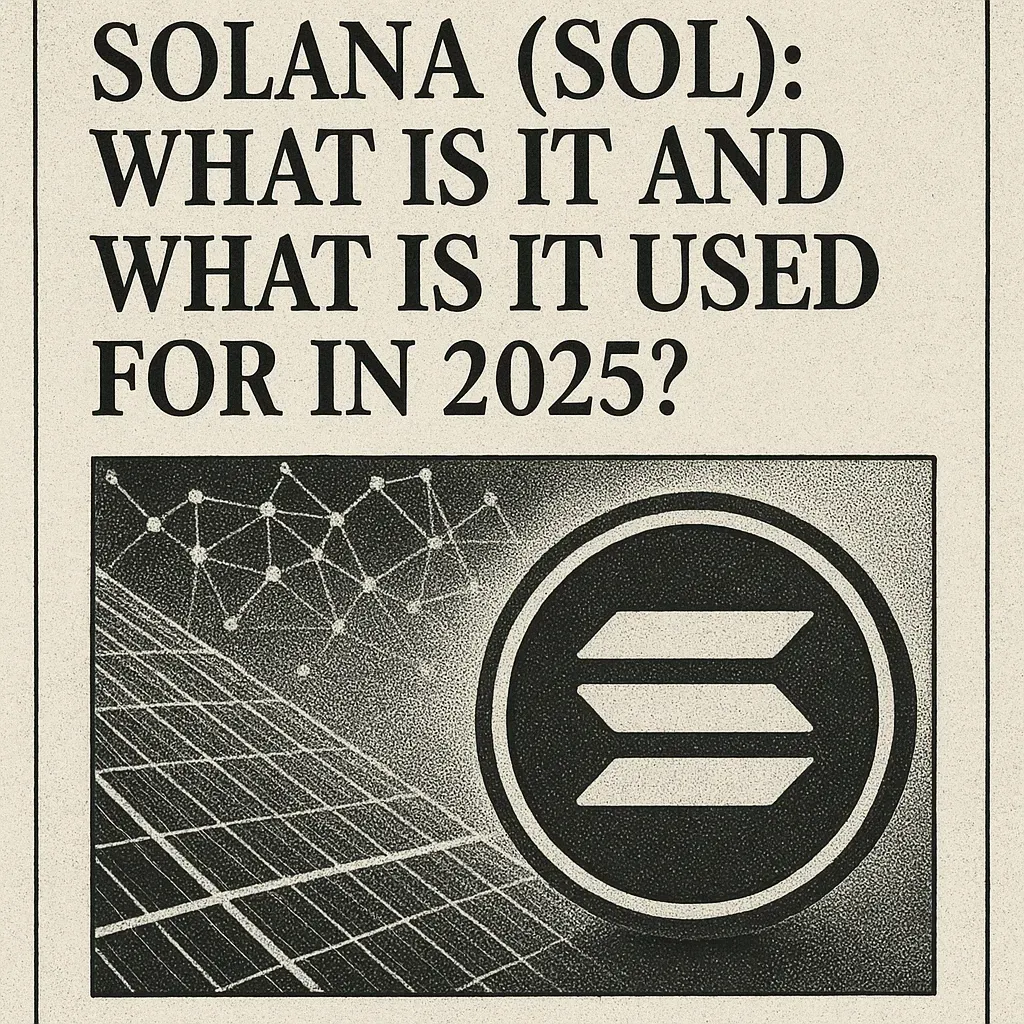
What Is Solana (SOL) and How It’s Used in 2025
Since its launch in 2020, Solana (SOL) has risen rapidly to become one of the most talked-about projects in the cryptocurrency space. As of 2025, it remains a top 10 digital asset by market capitalisation, solidifying its place as a key competitor to Ethereum in the race to power the decentralised future.
But what exactly is Solana, and why is it gaining such traction?
What Is Solana?
Solana is a Layer 1 blockchain designed to deliver high-speed, low-cost transactions without compromising on decentralisation or security. It was created by Anatoly Yakovenko, a former Qualcomm engineer, who introduced a novel mechanism called Proof of History (PoH), paired with Proof of Stake (PoS), to dramatically increase throughput.
This hybrid consensus model allows Solana to process over 65,000 transactions per second (TPS), far exceeding Ethereum’s current capacity. With near-zero gas fees and rapid finality, Solana is tailored for applications requiring speed such as DeFi, gaming, and high-frequency trading platforms.
What Is the SOL Token Used For?
The native token, SOL, is used primarily to:
- Pay transaction fees on the Solana network
- Stake and earn rewards, securing the network
- Participate in governance (expected to expand in future updates)
- Use in Solana-based apps (DeFi platforms, NFT marketplaces, games, and more)
As the Solana ecosystem expands, SOL becomes increasingly integrated into a wide range of decentralised services.
Solana’s Ecosystem in 2025
Solana’s ecosystem has exploded over the past few years, and by 2025 it features:
- DeFi giants like Marinade, Jito, and Kamino Finance
- NFT marketplaces including Magic Eden and Tensor
- Decentralised social networks such as Dialect and Solcial
- Mobile-first dApps supported by the Solana Mobile Stack and Saga smartphone
Newer initiatives like Firedancer, a new validator client developed by Jump Crypto, aim to make Solana even more resilient and scalable addressing past criticisms around network outages.
Why Is Solana Popular Among Investors in 2025?
- Scalability Without Layer 2s: Unlike Ethereum, Solana doesn’t require Layer 2 chains for scaling, making user experience smoother and less fragmented.
- Developer Activity: Solana has one of the most active developer communities, which often correlates with long-term success.
- Backed by Major Funds: VC firms like a16z, Multicoin Capital, and Jump Crypto have all invested heavily in Solana-related projects.
- Retail Accessibility: Low fees and mobile-focused dApps make Solana ideal for users in emerging markets.
Despite market volatility, many analysts believe Solana will continue to play a pivotal role in the blockchain sector through 2025 and beyond.
Stay on top of any cryptocurrency news by following us on X @ouinex